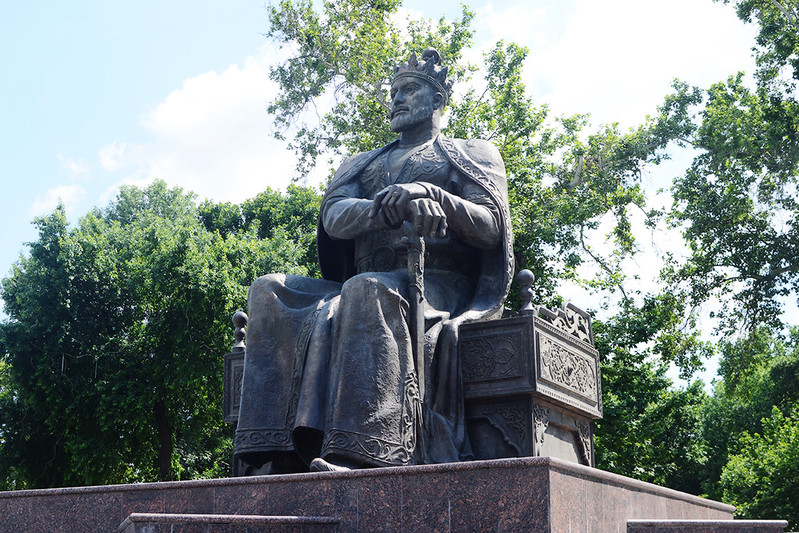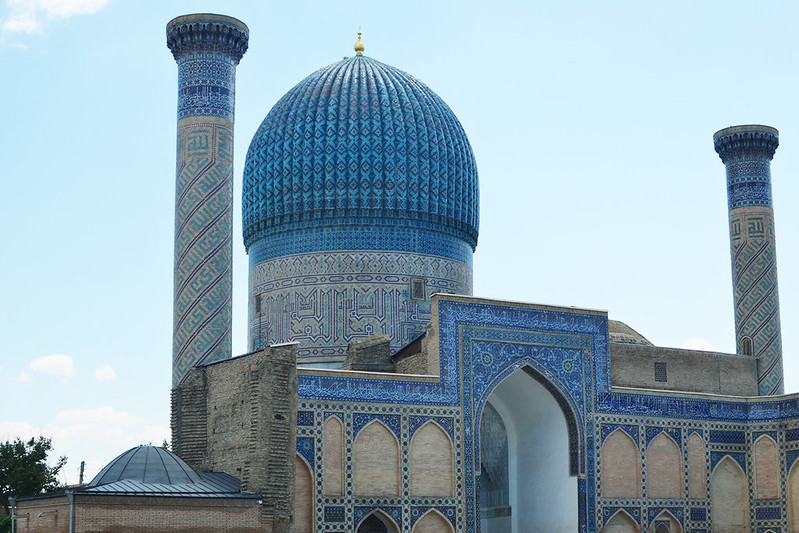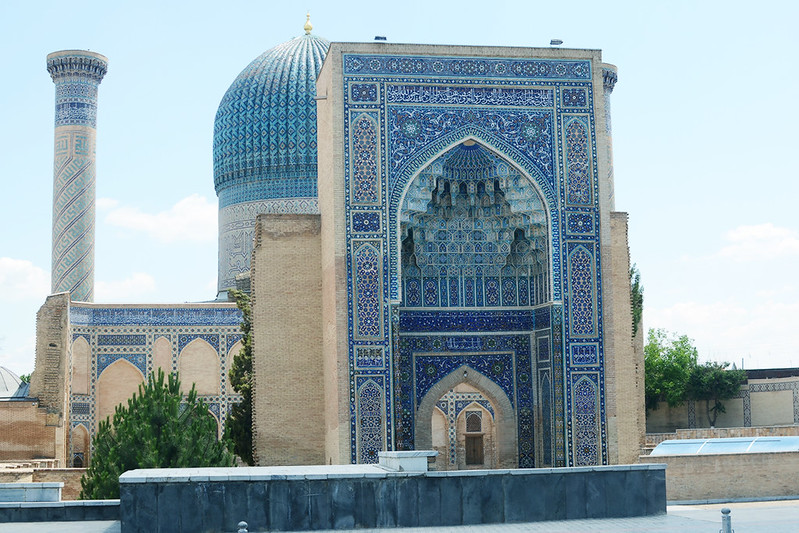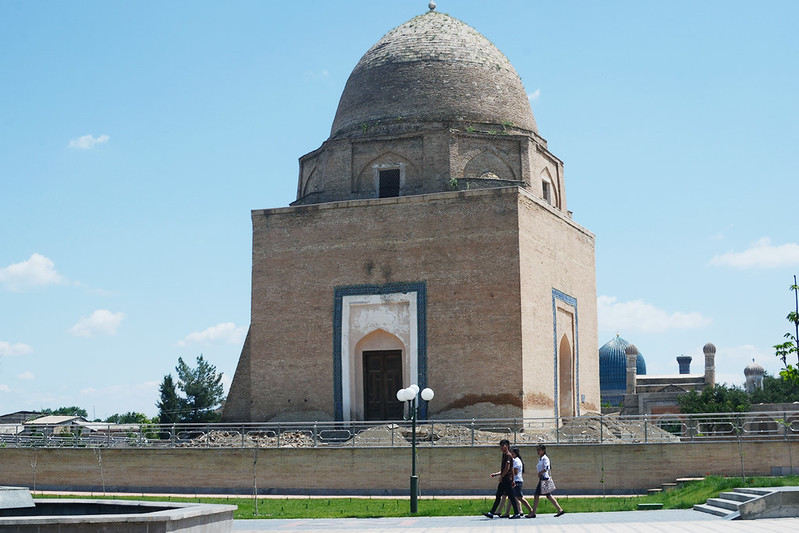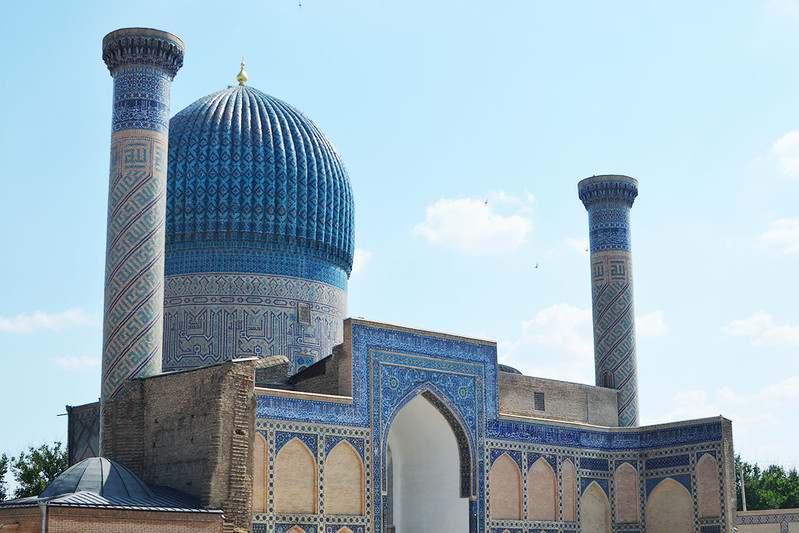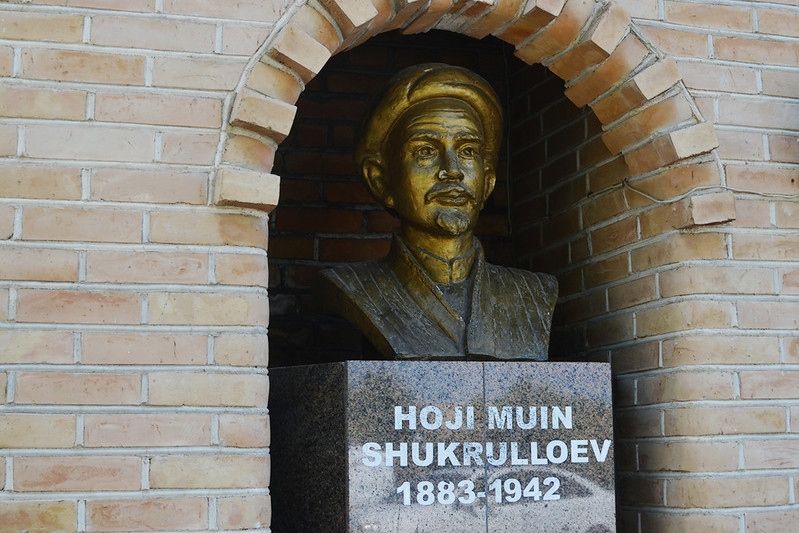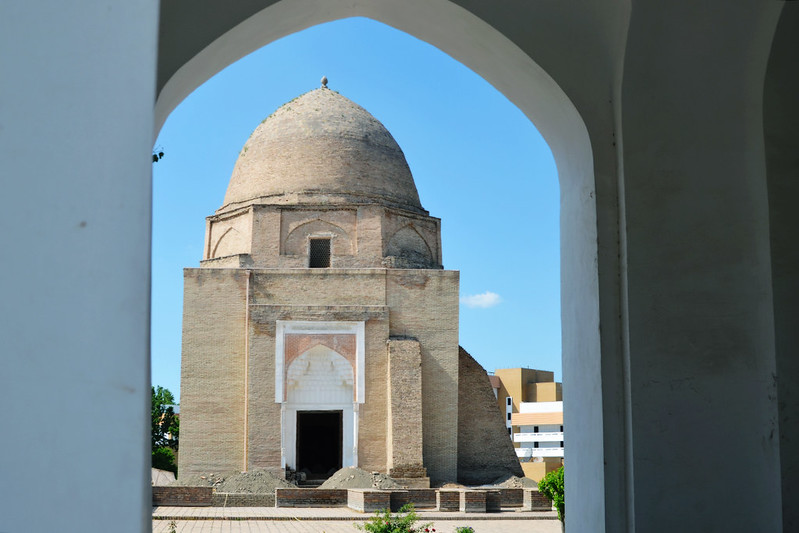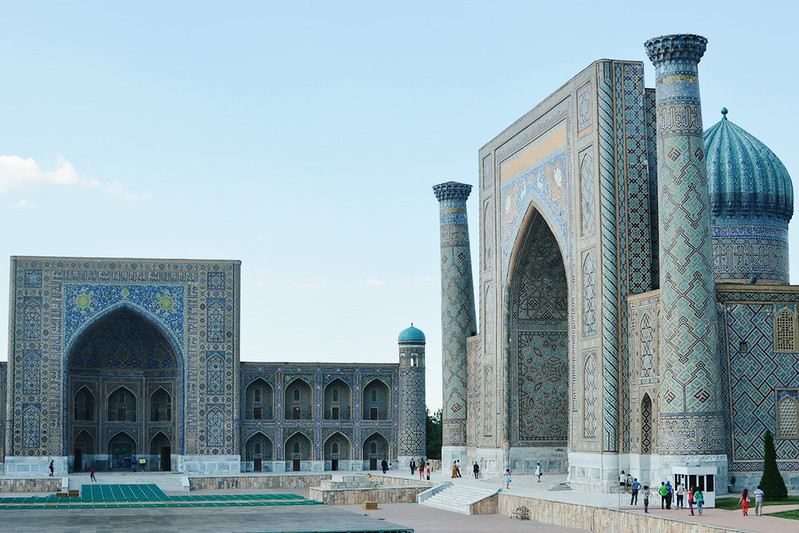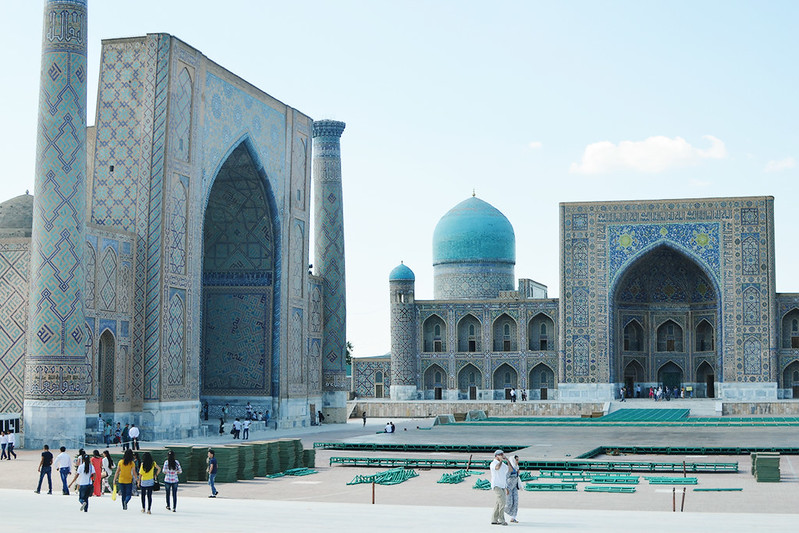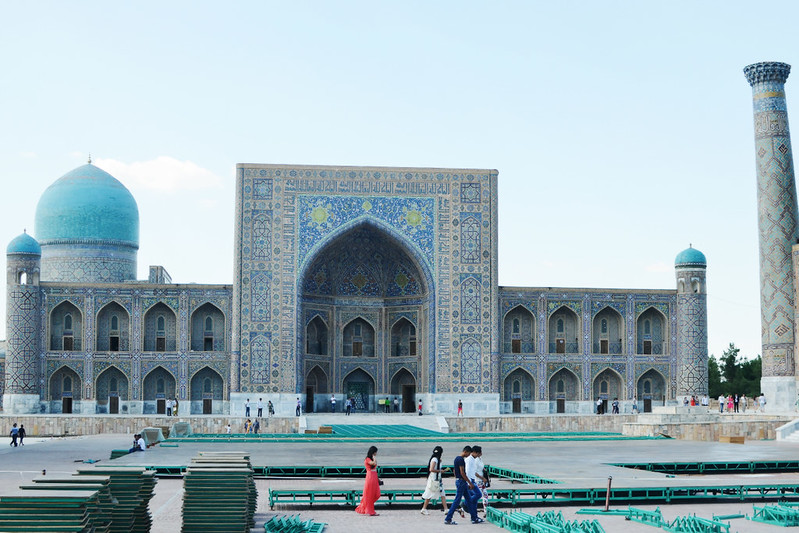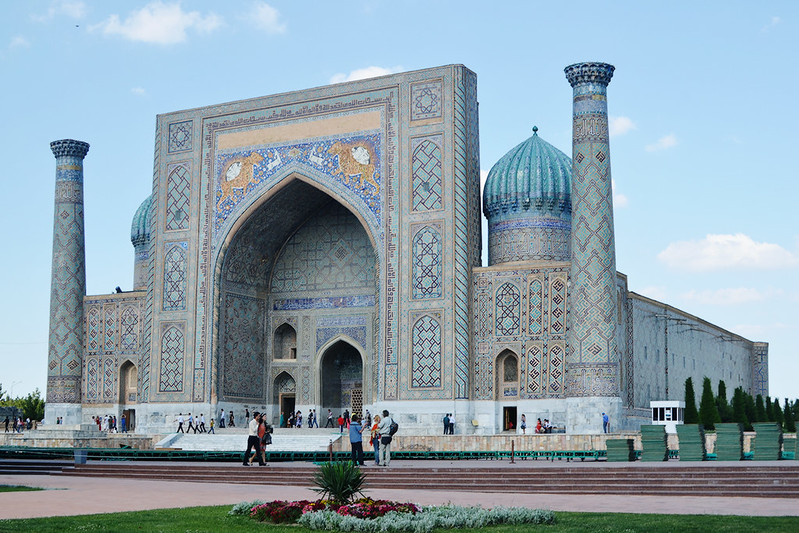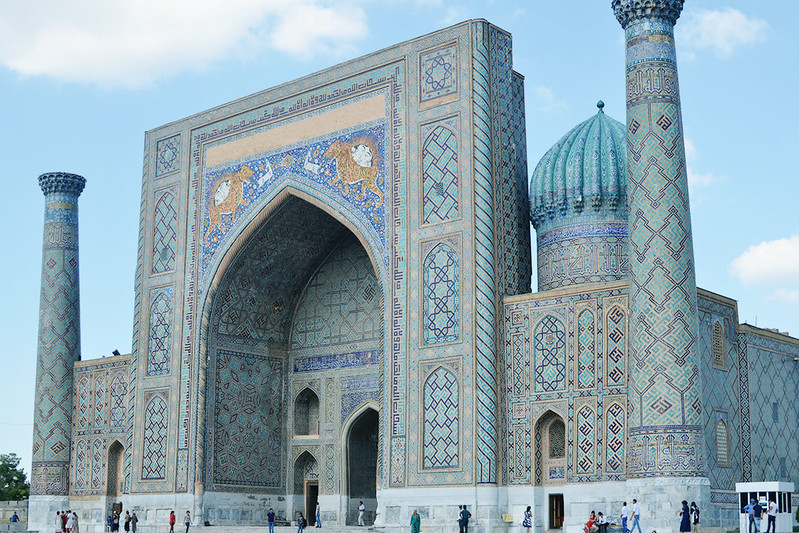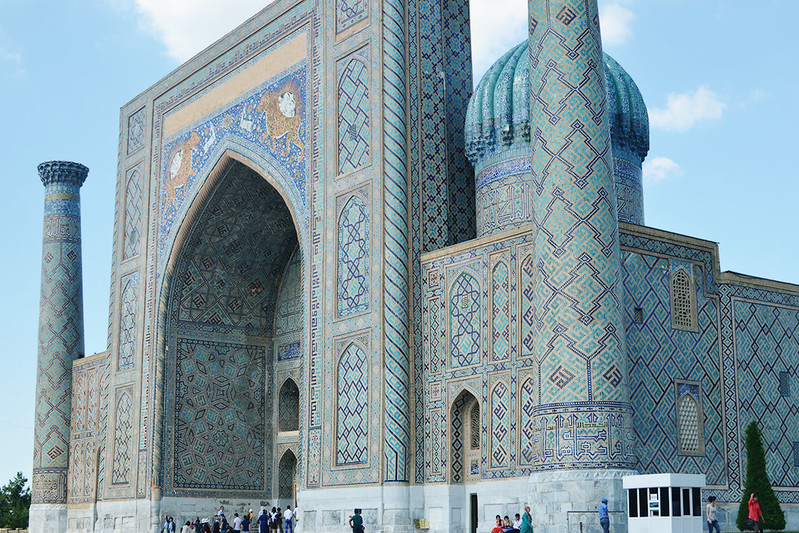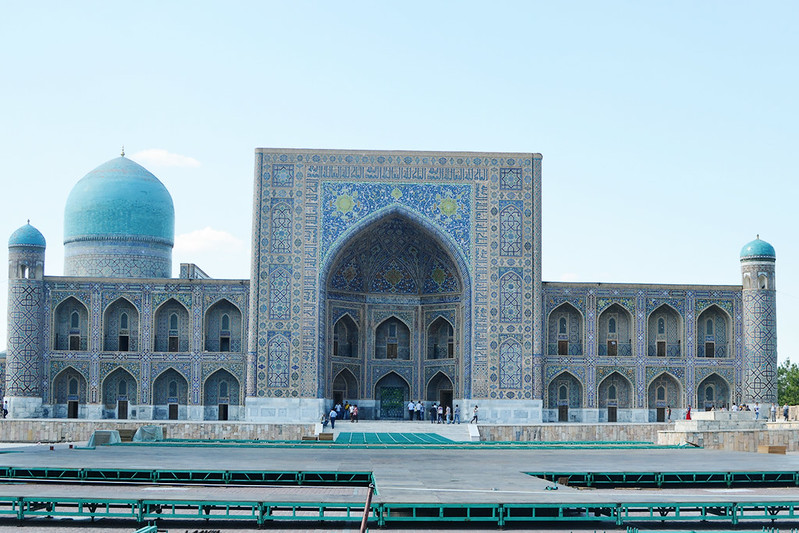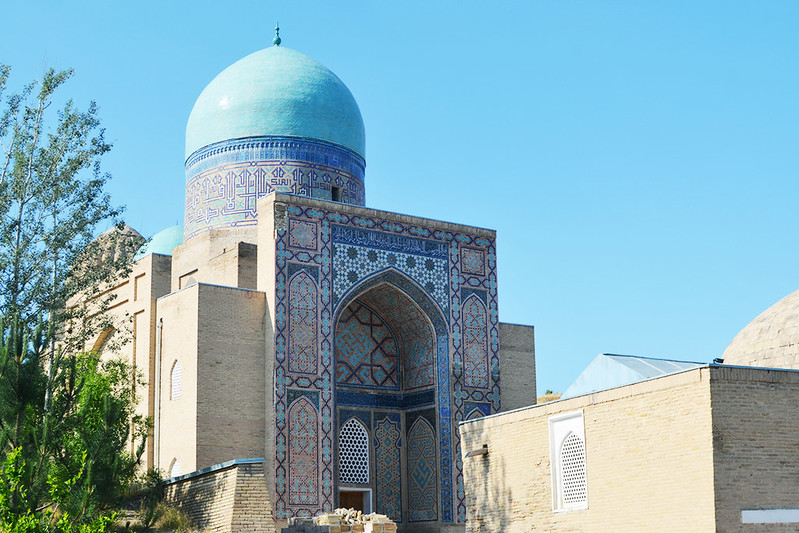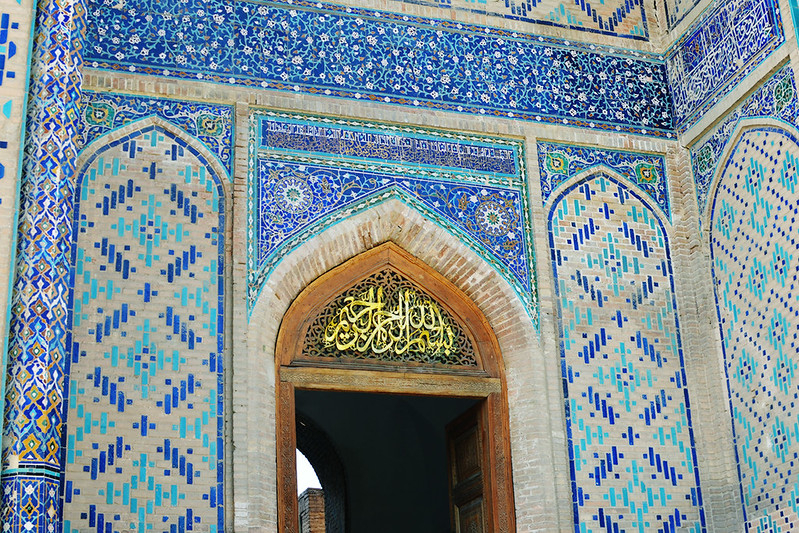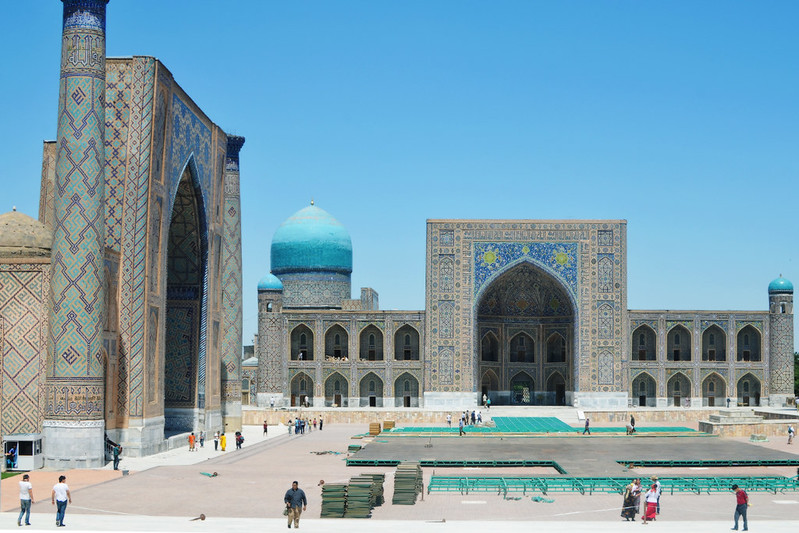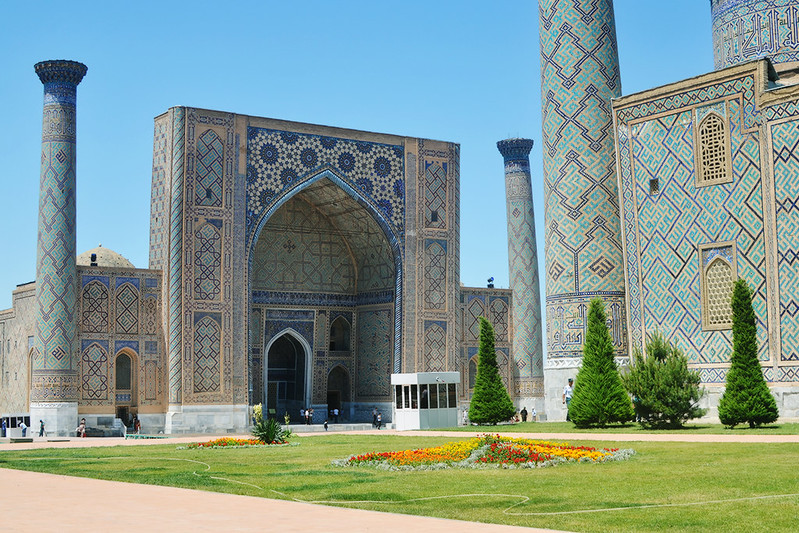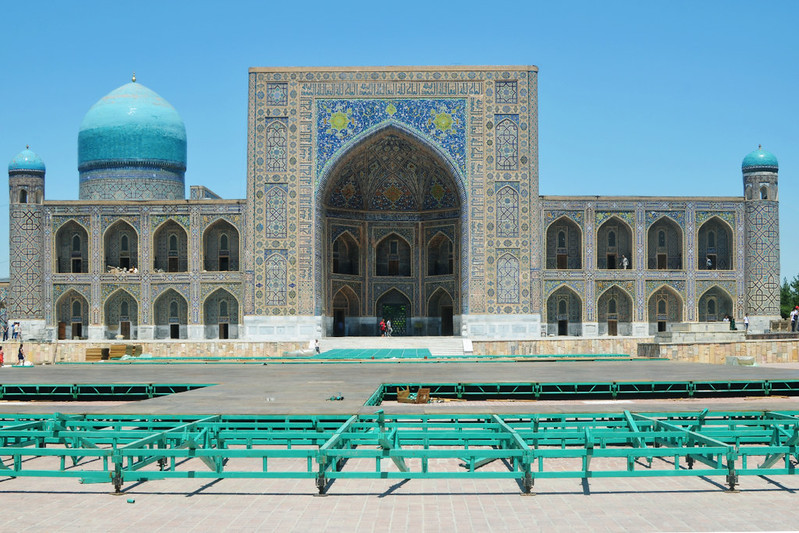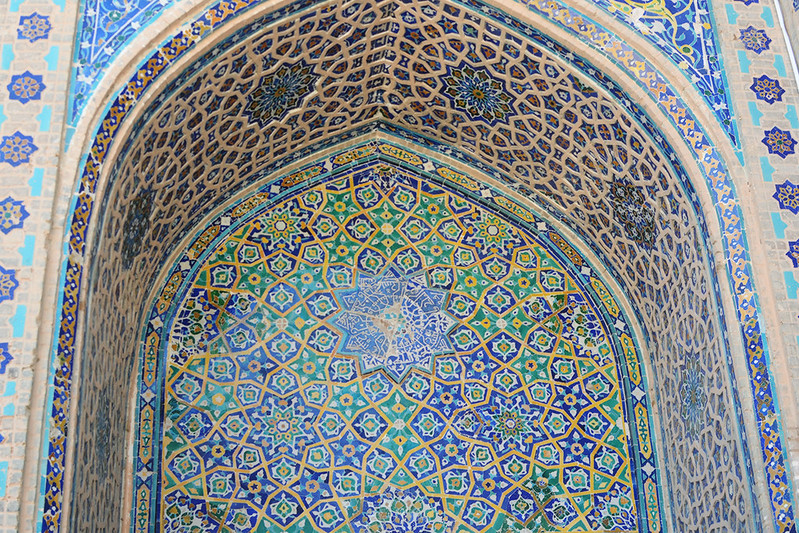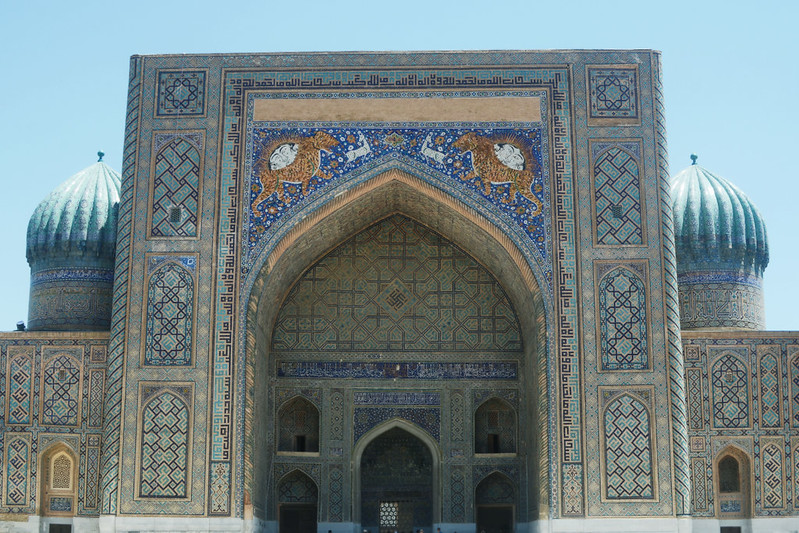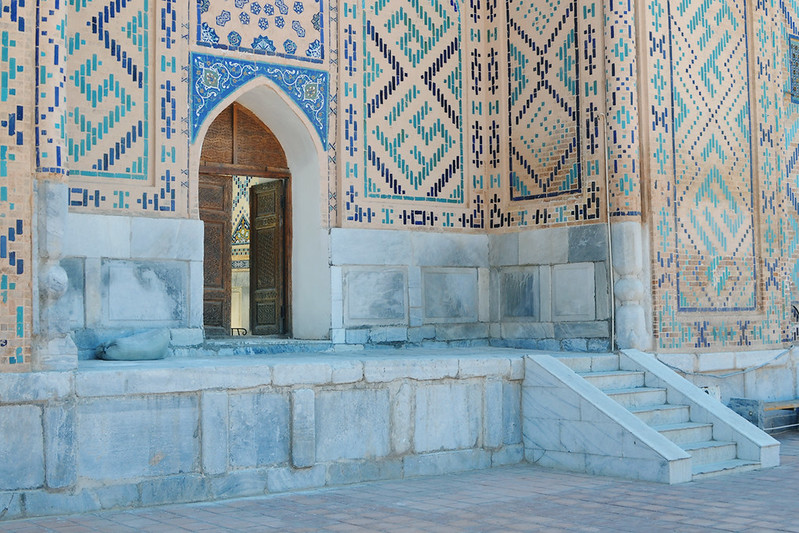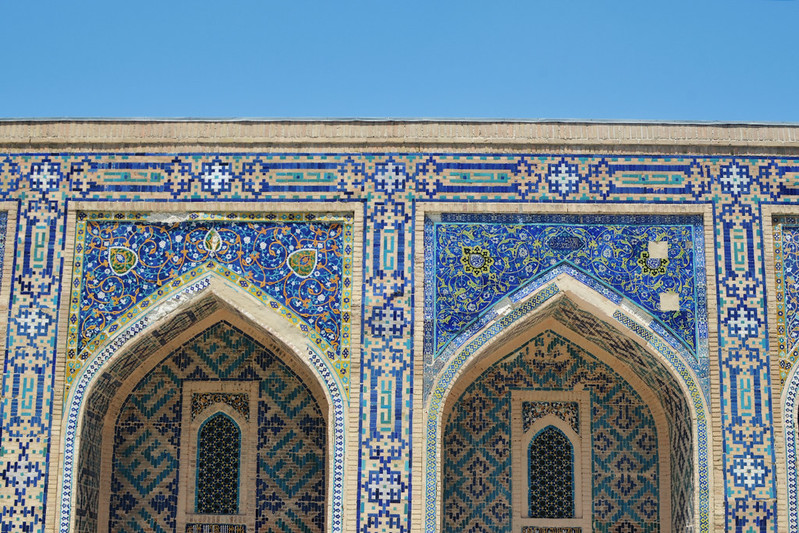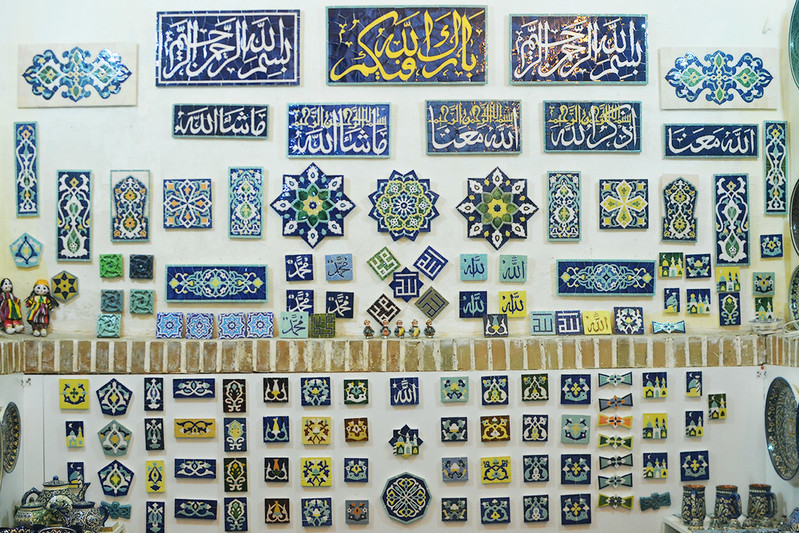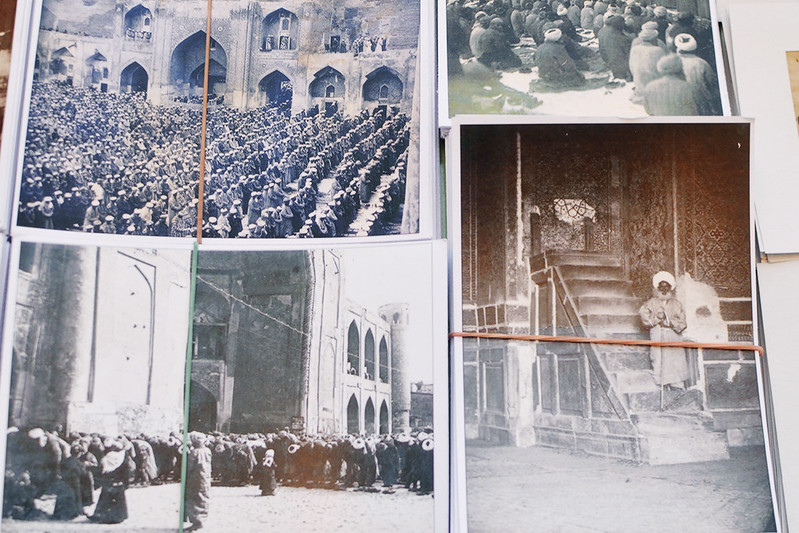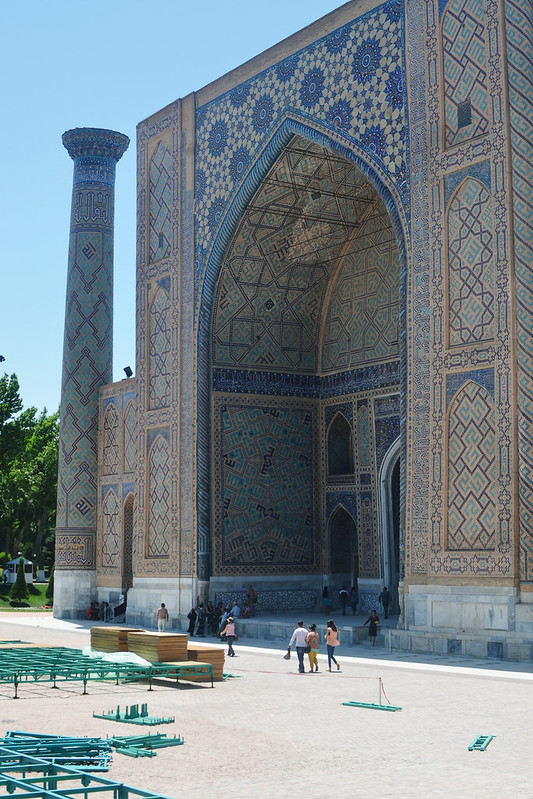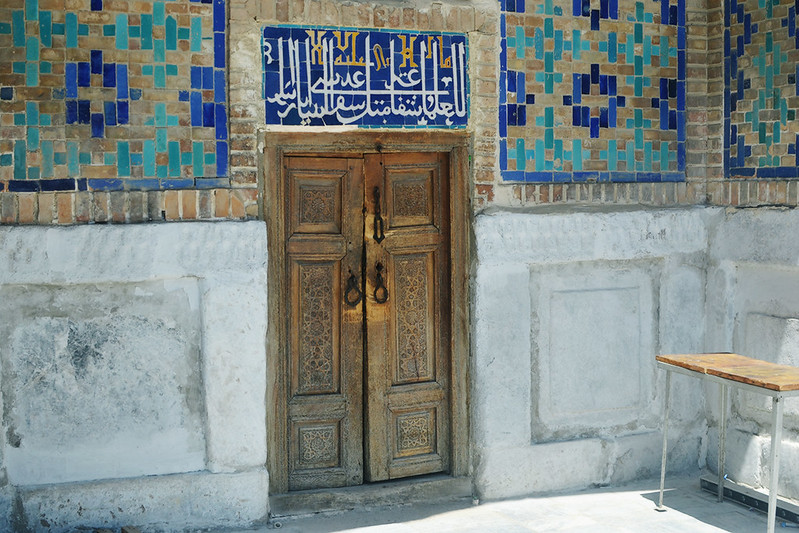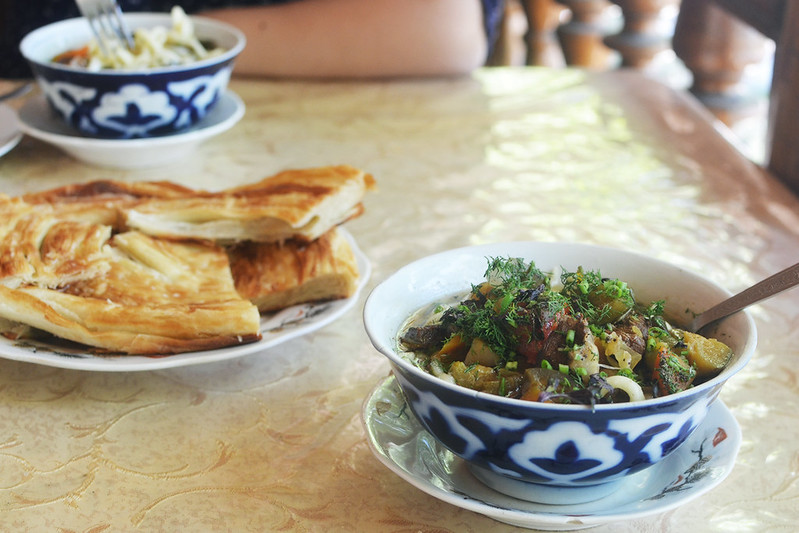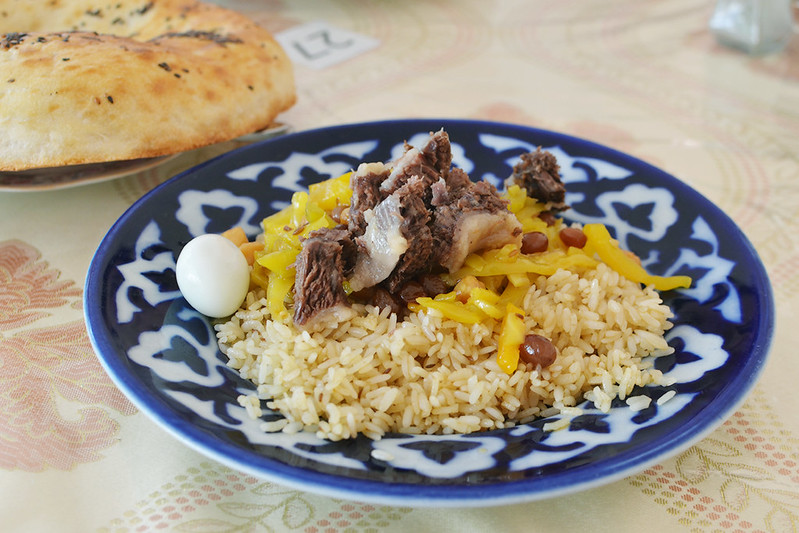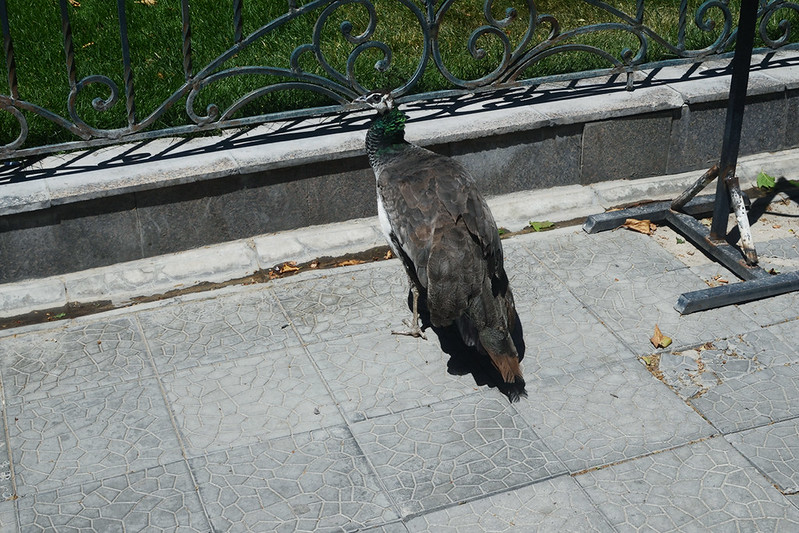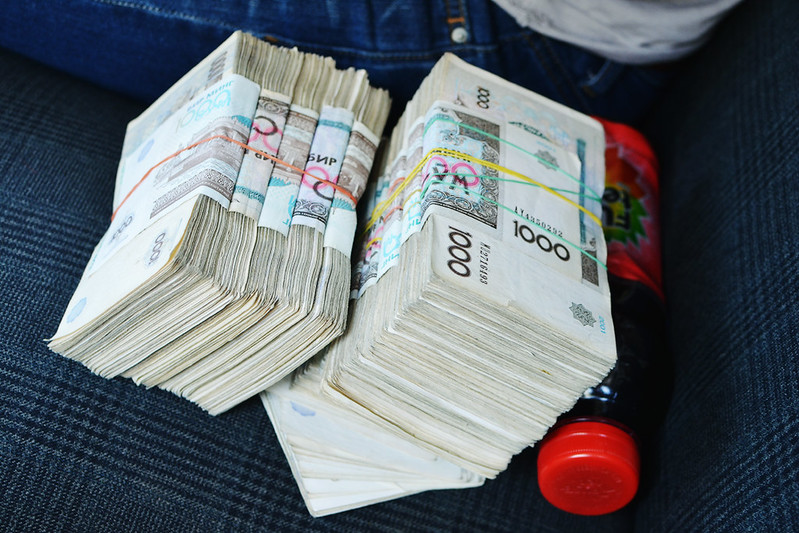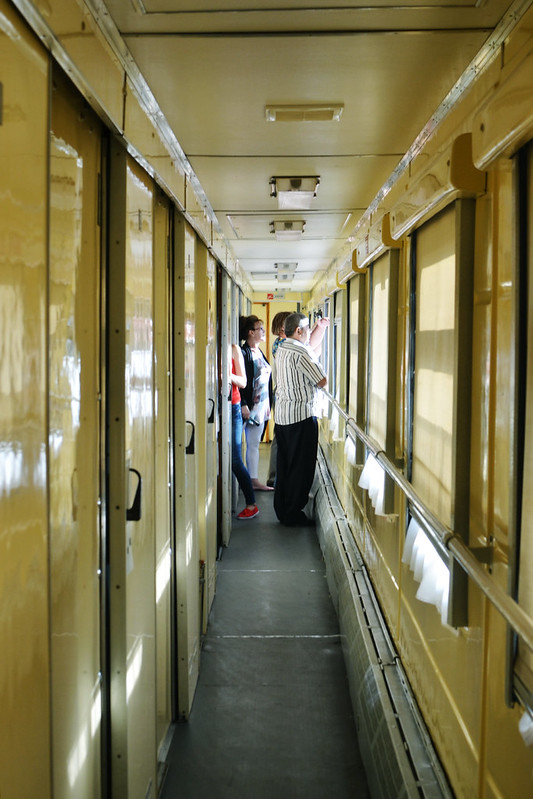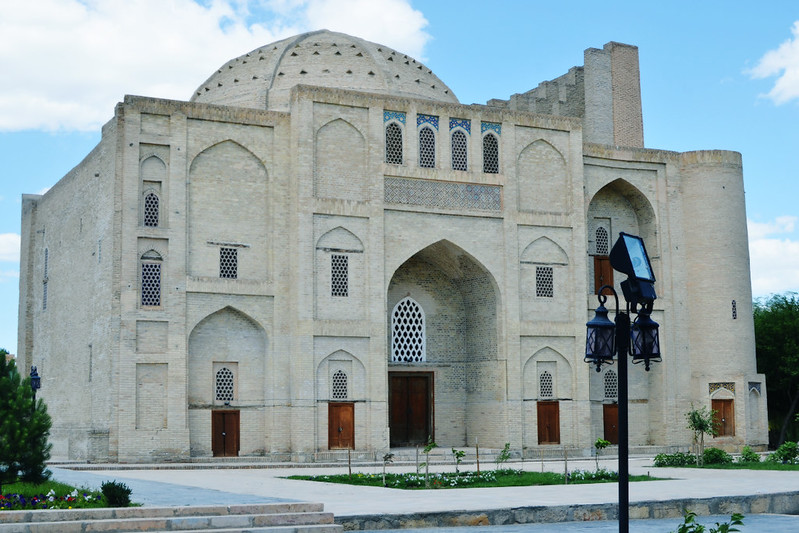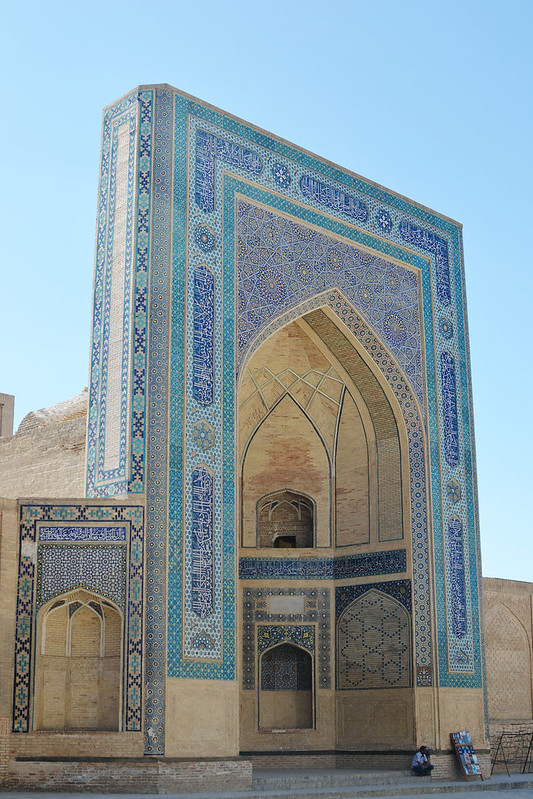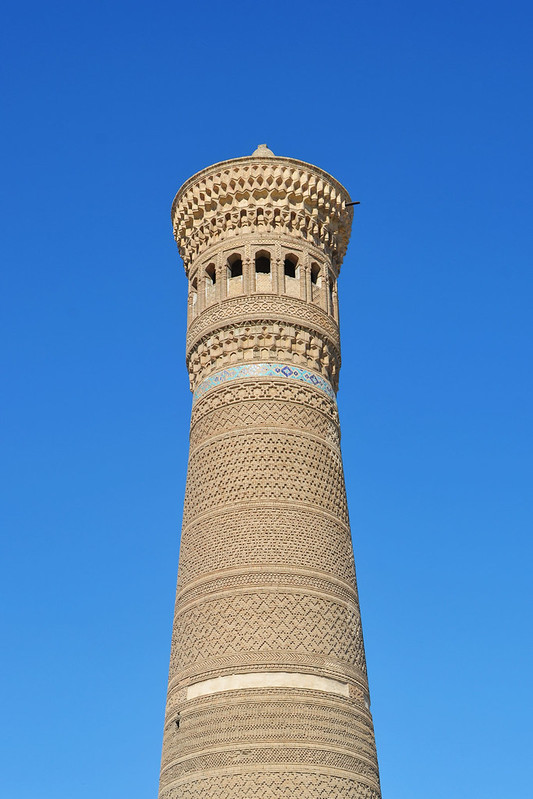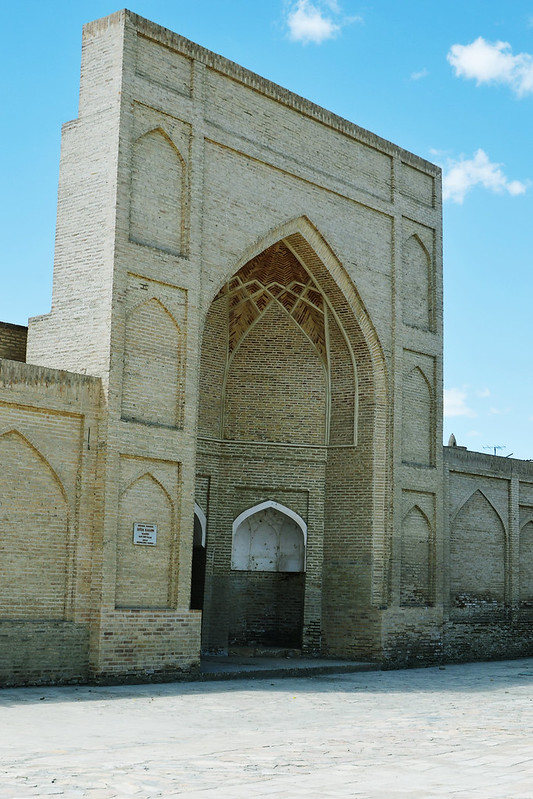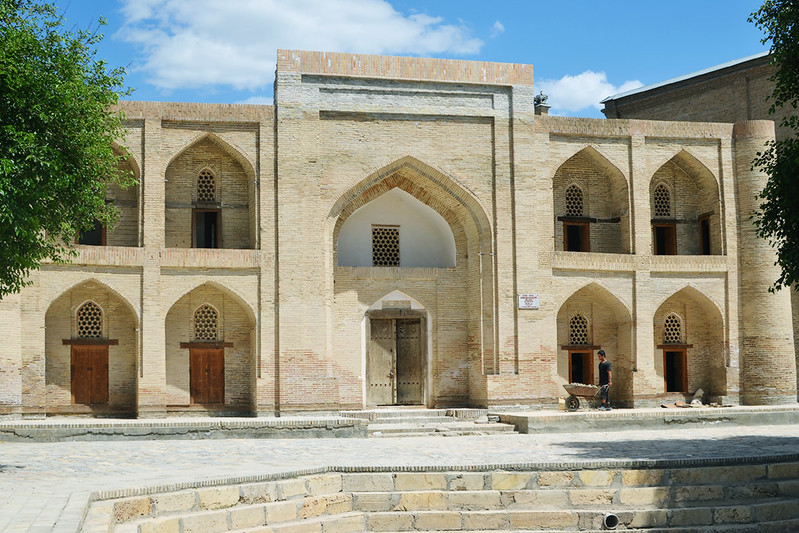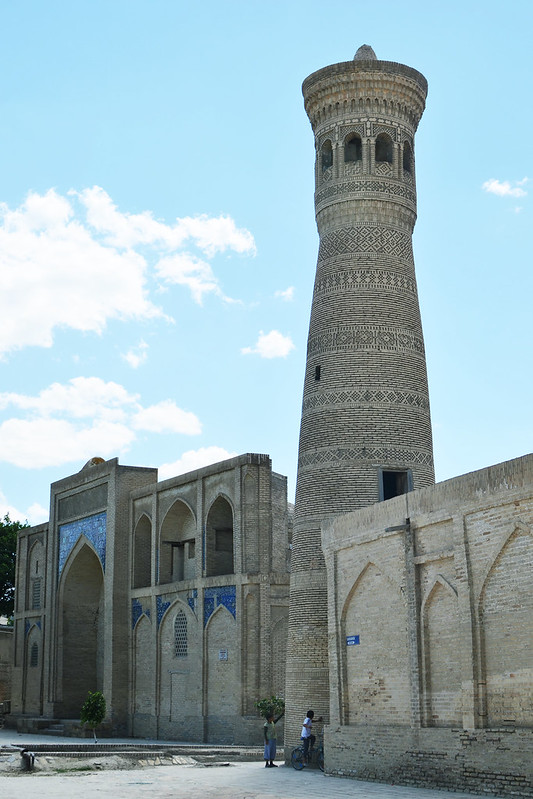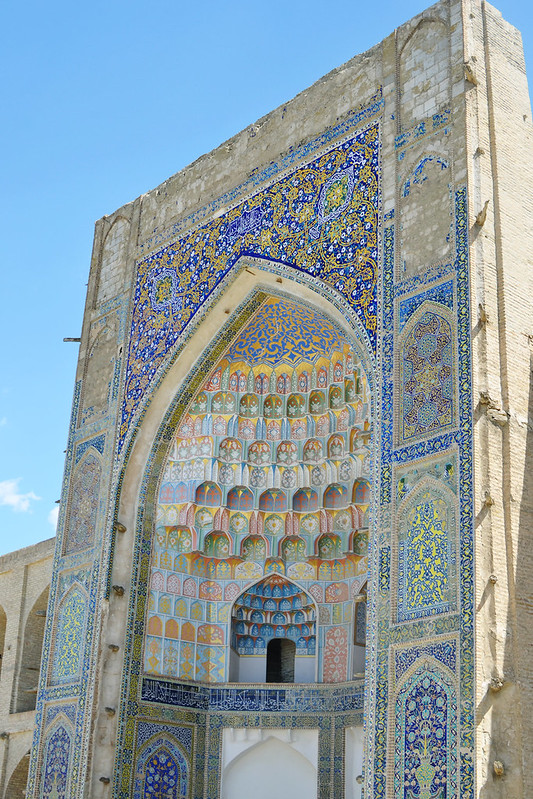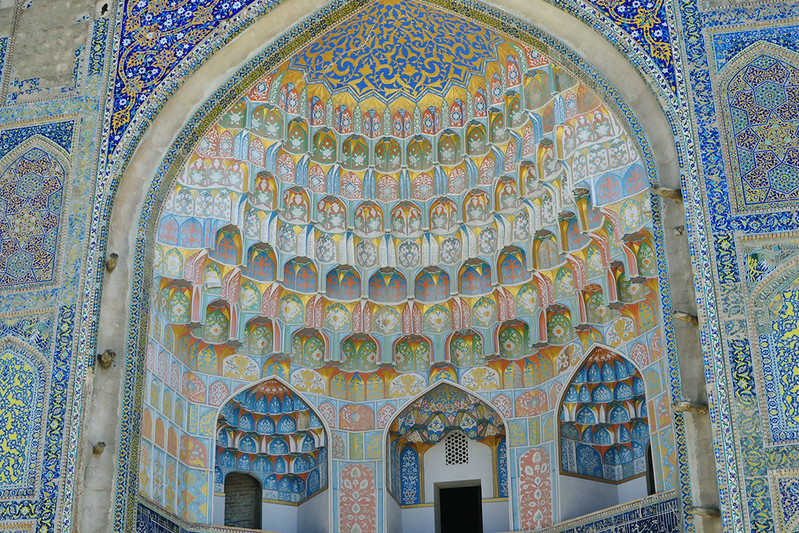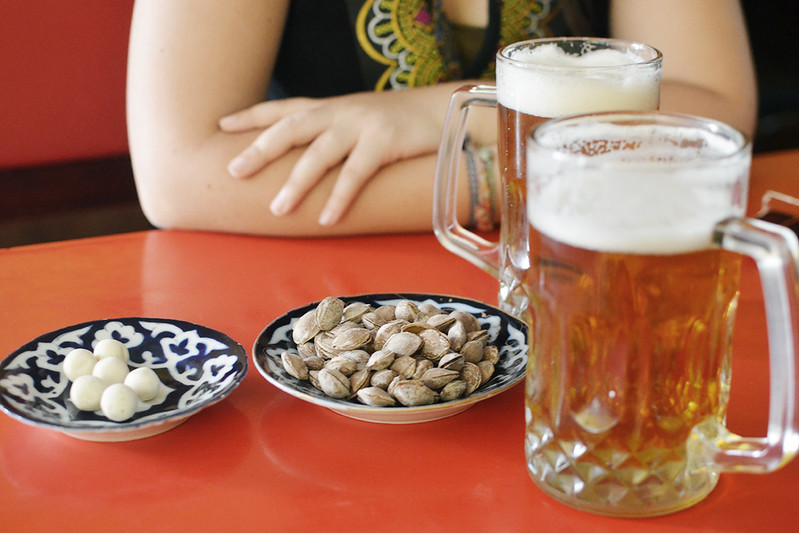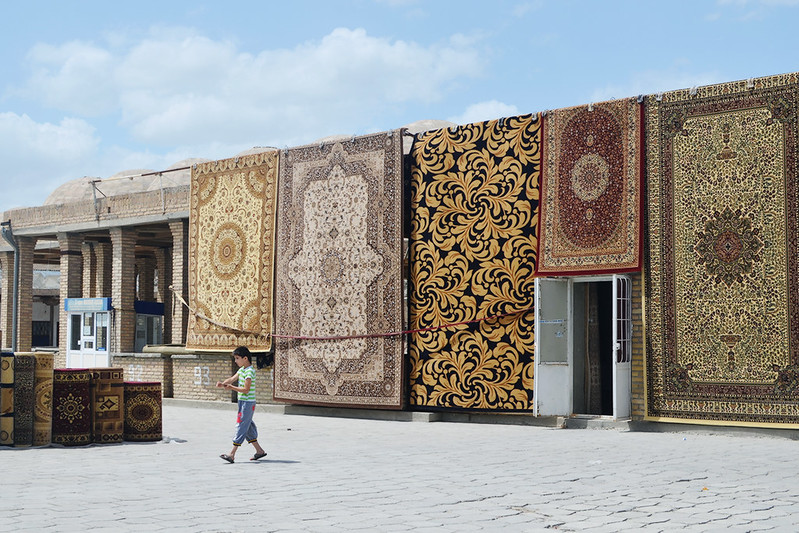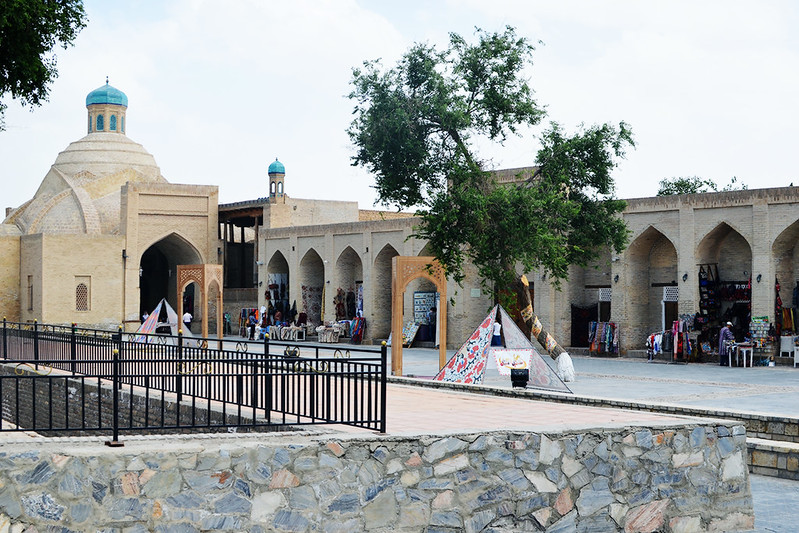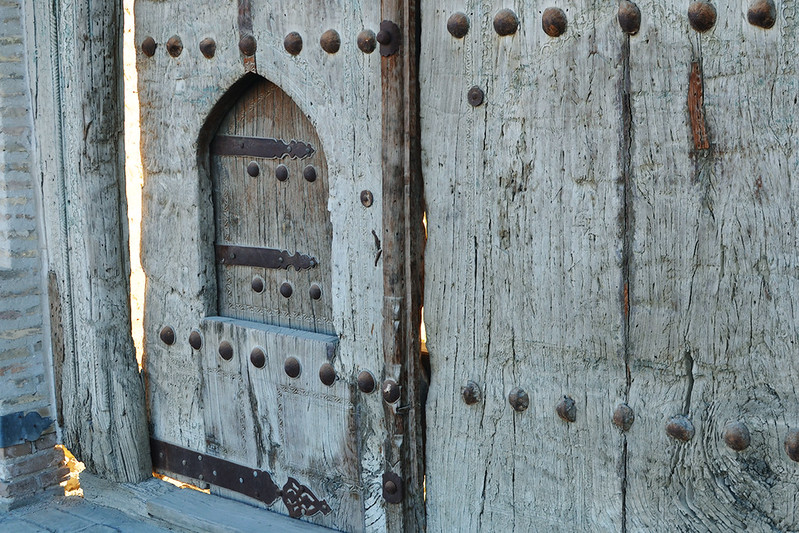Hey! Hi! SUP. Yo. You’re reading about a trip that took place 11 months ago (May – June 2015), which means that I am sadly no longer in Central Asia. However, the trip was awesome enough that I feel compelled to write about it in a series of blog posts, because it’s unsurprisingly … kind of difficult to write about three different countries and so many different experiences’ worth of text and consolidate that sucker into one blog entry. Also, I’m likely a) nostalgic, b) itching to travel again, c) guilty about having so many orphaned photos on my HD, or d) all of the above. HERE WE GO.
Our bags packed and ready to go, Rebekah and I were on the train to our second Uzbek destination: Samarkand! Was I excited or was I really freaking excited that I could now visit the one elusive place that refused to be crossed off my travel bucket list. If there was one place that inspired this entire trip, it was Samarkand, the historic town that became an UNESCO site for being the Crossroads of Cultures, the Silk Road hub, the capital of the Timurid empire … the list goes on and on. If Bukhara felt like a town that was pulled out and recreated from a time-machine and Tashkent felt like a modern city breaking out of its post-Soviet shadow, then Samarkand was an intersection of the two. There were a lot more cars! Bars! (Granted, this wasn’t exactly pub crawl territory, but there were at least more signs of life during the nighttime.) People! Like this gent below:
The man above, Timur / Tamerlane / Amir Temur, was the leader whose dynasty had revolved around Samarkand (and overall, Persia/Central Asia) and whose statue now watches over one of Samarkand’s biggest intersections. He also has a pretty awesome mausoleum dedicated to him:
Gur-e-Amir (also known as the Amir Temur Mausoleum) is a mausoleum (duh) that contains the tombs of Amir Temur himself, his sons, grandsons, and teacher. Only the foundations, entrance portal, and one of the four minarets remain, but even what’s been left (and restored) is nothing short of stunning. Can we talk about how incredible the azure mosaics are? Or the intricate patterns on those domes, because damn, son. And to think, we got to walk past this beaut day in and day out as we ventured outside.
In fact, the first day was largely spent visiting mosques, mausoleums, and minarets (the three Ms), and honestly something you could have made an entire trip out of. We had hit up Amir Temur Mausoleum as shown above, Bibi Khanym Mosque, Shakhi Zinda, Ulugh Beg Observatory, and Rukhabat Mausoleum, in a day, making good use of our walking shoes and sunscreen. By the time we passed by the crown jewel of Samarkand, Registan Square, we had only enough energy to buy ice cream sandwiches and plop down on the nearby park chairs and people watch. Which, to be fair, blows all other summer afternoons out of the water, when you’ve got a view like this:
The main public square of Samarkand, Registan Square is to Samarkand as Times Square is to New York, even though that’s a gross comparison to make because Registan doesn’t feel like a tourist-ridden hell, despite being the main go-to for tourists.
A wide sprawling square, Registan is flanked on three sides by madrasahs, which were actually schools! With dorms and colleges and lecture halls — the whole she-bang. Look, I’ve visited plenty of gorgeous college campuses before and have studied at a university with an impressive neoclassical-style campus, but going purely off architecture here, the Ulugh Beg Madrasah (above) might just school all the other schools out there.
Also, I’m not sure if I’d get enough schoolwork done, because I’d likely do what I did the first day and eat ice cream all afternoon on the grass. Not that this was terribly different from what I did on weekday afternoons in college, but.
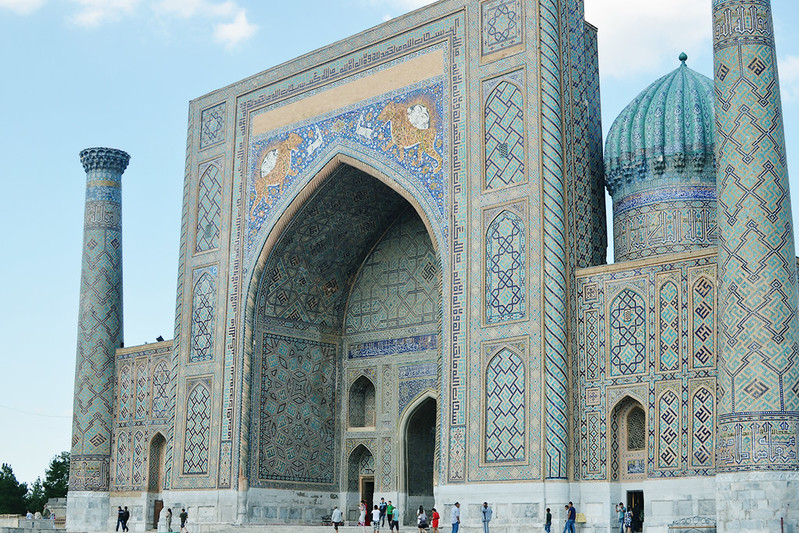
Sher-Dor Madrasah. Check out them tiger mosaics!
Also, don’t these close-up shots make you so mad? These mosaics, man.
Inside Registan Square, there are several bazaars tucked away where you can buy different goods and souvenirs to bring home.
As you can tell by the bajillion photos that I just posted, Registan was so fucking big that it totally justified Rebekah and I spending our entire second day there. However! We of course needed enough nutrition and sustenance to last us in the 90-degree desert heat, and Uzbek food happens to be such a largely-untapped goldmine of carb-fueled cuisine that it deserves its own mention. Standouts included:
Lagman. We ate this in Bishkek, but in Uzbekistan, they were generous with the dill and this one was more soupy, like the type of dish you’d want if you were stuck inside during a particularly cold day. Cold-weather comfort food, if you will.
When paired with non (Uzbek bread), it’s carby heaven. Also, non is etymologically similar to naan, so of course it’d make sense that all carbohydrate-y goodness happens to be related.
Manti are traditional Turkic dumplings about the size of a fist. Usually topped with butter or cream, they contain lamb meat with added fat for all that savory goodness.
My absolute favourite Uzbek dish, though?
Plov, hands down.
As a general fan of rice (having grown up on that stuff as a kid), I’m already naturally predisposed to love plov. If you take any dish with a rice base, and add garlic, carrots, chickpeas, and lamb, consider me sold. However, in Uzbekistan, plov is a national institution. It’s the national dish, of course, which already gives it some legitimacy, but there are cult-like levels of enthusiasm where there are restaurants that make large batches of plov and only plov and they sell out before noon. Could you imagine if that happened with every brunch place in America?
Fun fact: plov = pilaf. Rice pilaf, get it?
Weirdly enough, the plov game was strongest in Tashkent, where there are incidentally a higher concentration of cafes and restaurants and of course, a much larger demand. But more on that in my next post! I’m already getting hungry just waxing nostalgic about it.

